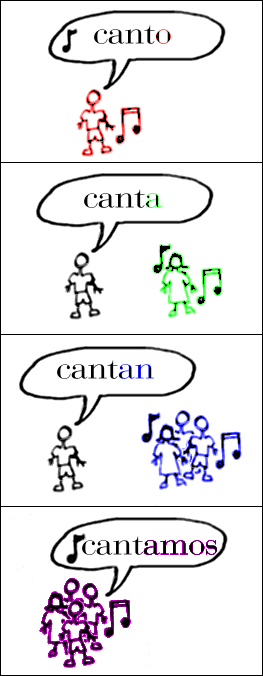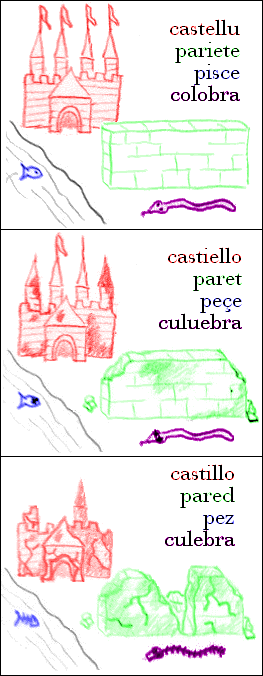Cartoon Theories of Linguistics
Part ז—Synchronic vs. Diachronic
Phineas Q. Phlogiston, Ph.D.
Unintentional University of Lghtnbrgstn
If you have fallen behind, try to catch up. For those who are caught up, a simple explanation of the difference between synchronic contrast and diachronic contrast, illustrated with examples from a couple of the beautiful Romance languages—Spanish and its ancestor, Latin:
|
Synchronic

|
Diachronic

|
Up next: The Trouble with NLP.
References
- Barðdal, Jóhanna H. (2001). Case in Icelandic: A Synchronic, Diachronic and Comparative Approach.
- Blevins, Juliette. (2004). Evolutionary Phonology: The Emergence of Sound Patterns.
- Brugmann, Karl, Berthold Delbrück. (1886-1916). Grundriss der vergleichenden Grammatik der indogermanischen Sprachen.
- Bynon, Theodora. (1977). Historical Linguistics.
- Chappell, Hilary. (2004). Chinese Grammar: Synchronic and Diachronic Perspectives.
- Connolly, John H. (1991). Constituent Order in Functional Grammar: Synchronic and Diachronic Perspectives.
- Eckardt, Regine, Klaus von Heusinger, Christoph Schwarze. (2003). Words in Time: Diachronic Semantics from Different Points of View.
- Fallon, Paul D. (2002). The Synchronic and Diachronic Phonology of Ejectives.
- Fuß, Eric, Carola Trips (eds.). (2004). Diachronic Clues to Synchronic Grammar.
- Geeraerts, Dirk. (1997). Diachronic Prototype Semantics: A Contribution to Historical Lexicology.
- Hansen, Erik W. (2001). The Synchronic Fallacy: Historical Investigations with a Theory of History.
- Lehmann, Winfred P. (1973). Historical Linguistics: An Introduction.
- Loyd, Paul M. (1987). From Latin to Spanish.
- Marchand, Hans. (1960). The Categories and Types of Present-day English Word-formation: A Synchronic-diachronic Approach.
- Penny, Ralph. (1991). A History of the Spanish Language.
- Percy, Carol E., Ian Lancashire, Charles F. Meyer (eds.). (1996). Synchronic Corpus Linguistics: Papers from the Sixteenth International Conference on English Language Research and Computerized Corpora.
- Rauch, Irmengard, Charles T. Scott. (1967). Approaches in Linguistic Methodology.
- Rosenbach, Anette. (2002). Genitive Variation in English: Conceptual Factors in Synchronic and Diachronic Studies.
- Ross, Stephen David. (1994). The Limits of Language
- Saussure, Ferdinand de. (1916). Cours de linguistique générale.
- Sommerfelt, Alf. (1962). Diachronic and Synchronic Aspects of Language: Selected Articles.
- Stark, Detlef. (1982). The Old English Weak Verbs: A Diachronic and Synchronic Analysis.
- Szemerényi, Oswald J. L., Béla Brogyányi (eds.). (1979). Studies in Diachronic, Synchronic and Typological Linguistics: Festschrift for Oswald Szemerényi on the Occasion of His 65th Birthday.
- Torres Cacoullos, Rena. (2000). Grammaticization, synchronic variation, and language contact.
- Trask, R. L. (ed.). (2001). Dictionary of Historical and Comparative Linguistics.
- Walsh, Thomas Joseph. (1989). Synchronic and Diachronic Approaches to Linguistic Variation and Change.

